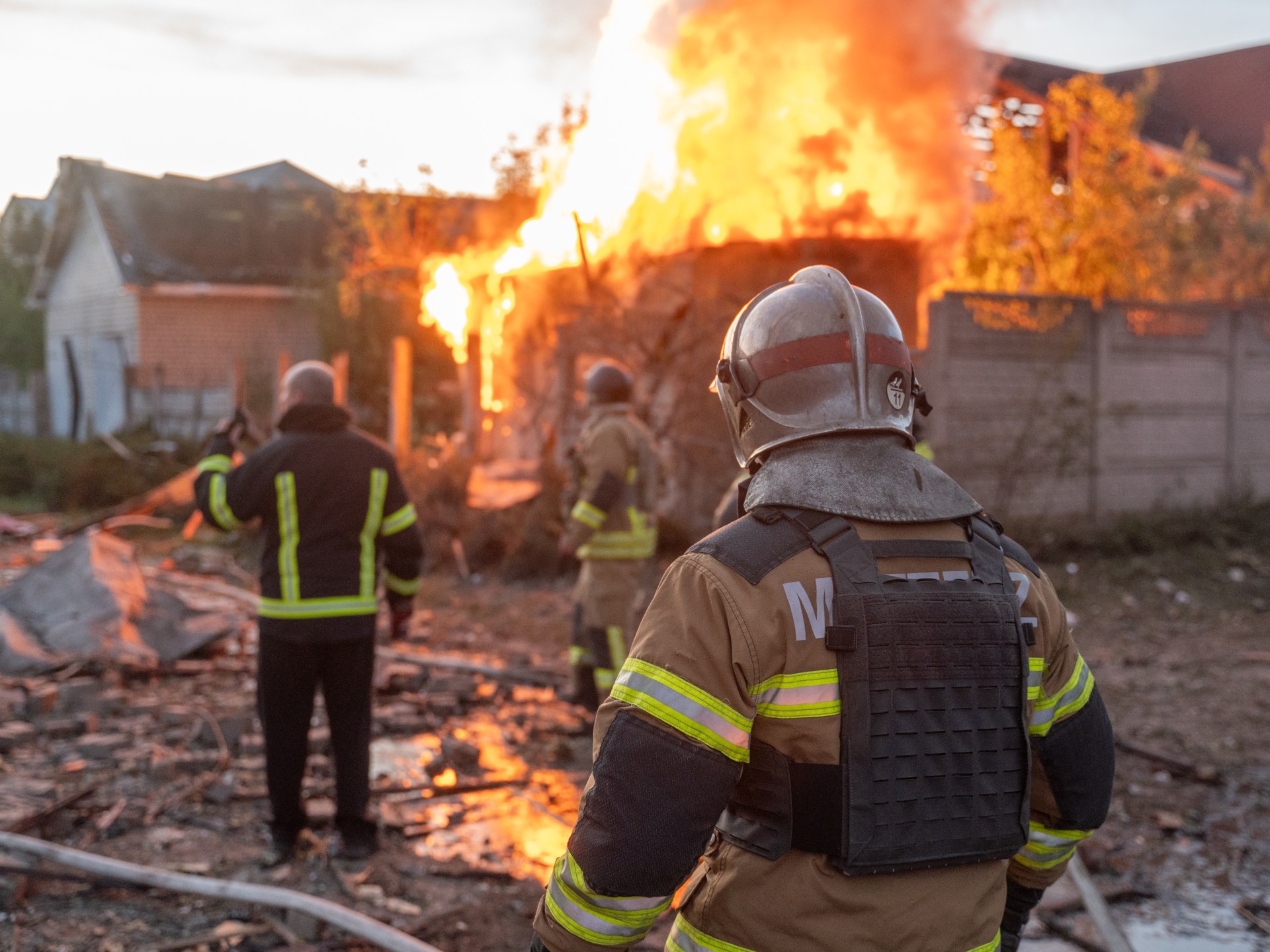Intensifying Conflict: Drone and Missile Strikes Escalate Between Russia and Ukraine
In a series of escalating confrontations, Ukraine and Russia continue to exchange drone and missile attacks almost daily. The Ukrainian Air Force reported on Wednesday that it successfully intercepted 22 out of 27 'Shahed' drones launched by Russia targeting five regions overnight. The Poltava region saw an industrial facility damaged and one person injured due to the attacks, according to Governor Philip Pronin.
In the Mykolaiv region, the Ukrainian military destroyed six drones. Although the debris from one of the drones destroyed a private house and damaged ten others, there were no reported injuries. Governor of the Dnepropetrovsk region confirmed the downing of four drones over Kherson and four others over Dnepropetrovsk. The Sumy region also came under attack, though no details were provided regarding damage.
On the flip side, the Russian Ministry of Defense confirmed in a statement that five Ukrainian drones were downed over Belgorod, Kursk, and Voronezh provinces. According to the statement, these attacks resulted in the loss of 45 Ukrainian military personnel and the destruction of various military equipment including an infantry fighting vehicle and self-propelled artillery.
Amid the intensifying conflict, U.S. National Security Advisor Jake Sullivan announced that the United States is poised to provide new military assistance to Ukraine. Emphasizing the importance of air defenses and a steady supply of arms, Sullivan stated that these supplies have been making a significant difference on the battlefield. He clarified that Washington has no plans to send soldiers, military advisors, or trainers to Ukraine.
Meanwhile, Ukrainian forces reportedly utilized Himars missiles, supplied by the U.S., to strike Russian S-300 and S-400 air defense systems in the Belgorod region. Although Russian sources claimed that no soldiers were injured, the attack marks a significant escalation in the use of Western long-range weaponry by Ukraine. The Himars strikes were reported to have targeted multiple sites, causing a fire and damaging military equipment.
Until recently, Ukraine had primarily depended on its own firing systems and drones to hit Russian targets. The green signal from the U.S. to use powerful Western weapons has opened new strategic opportunities. However, Ukraine is bound by certain restrictions, including limits on the range of the missiles used, focusing mainly on the Belgorod region without deeply penetrating Russian territory.
Despite these restrictions, Ukrainian President Volodymyr Zelensky expressed optimism about further broadening these capabilities as Western allies become more supportive. Speaking during a press conference, Ukrainian Foreign Minister Dmytro Kouleba reiterated the need for expanded authorization for more effective defense against Russian forces, particularly those launching guided bombs from Russian airspace.
As the conflict rages on, both sides continue to employ increasingly sophisticated tactics and weaponry. The international community watches closely, with significant political and military implications hinging on each development.
- Analysts suggest that the increased use of sophisticated weapons like Himars could shift the balance in the ongoing conflict. Western nations, led by the United States, remain crucial in determining Ukraine's military capabilities as they aim to counter Russian advances.
- Further discussions are expected in upcoming international events, including the G7 summit in Italy and the 80th anniversary of the Normandy landings in France, where President Joe Biden is scheduled to meet Ukrainian President Volodymyr Zelensky. These discussions are anticipated to focus on Ukraine’s continued need for military support and potential broadening of the types of weaponry that can be used.
- Meanwhile, the humanitarian toll of this conflict continues to rise with reported injuries and substantial property damage on both sides. The international community calls for a de-escalation of hostilities, although such prospects seem distant given the current state of affairs.






